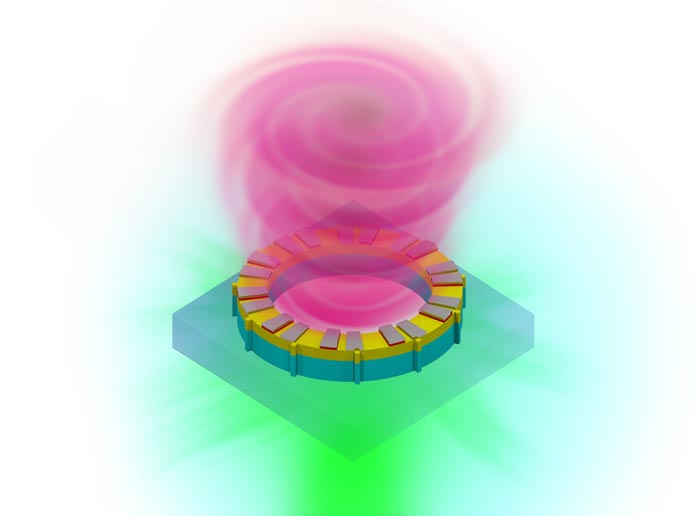An optical transmission advancement could help stave off the end of Moore's Law, according to researchers from the University at Buffalo, part of the State University of New York, or 'UB' for short. A study published in the journal Science describes a light-based communication tool that transmits data in a swift circular whirlpool, corkscrew or vortex motion. The study is entitled Orbital angular momentum microlaser, subtitled 'Microlasers with a twist'.

Back in June we heard about researchers in South Africa and Tunisia cramming more data into optical transmissions using light patterns, creating holograms to address the 'bandwidth ceiling'. That study was more about networking infrastructure than the architecture inside a computer.
The UB scientists take a different tack, using helical wavefronts to boost optical transmission capacity. Furthermore the UB scientists have bolder claims; that their orbital angular momentum (OAM) laser could stave off the predicted end of Moore’s Law, and be used in both quantum and classical computer architectures.
Key to this research, and bold computing claims, is that the UB researchers have been "able to shrink the vortex laser to the point where it is compatible with computer chips," according to the UB news blog. Due to the vortex pattern of light transmission it has been possible to transmit 10x the amount of information compared to traditional optical communication.

Assistant Professor Liang Feng, PhD, co-lead author of the study said that the focus of the research was in transferring "more data while using less energy". While I can't find available statistics about the energy usage of the vortex laser compared to a linear laser, it is indeed said to be less energy hungry. That makes a tenfold transmission capacity result even more impressive. The UB researchers are funded by the U.S. Army Research Office, the U.S. Department of Energy and National Science Foundation.













